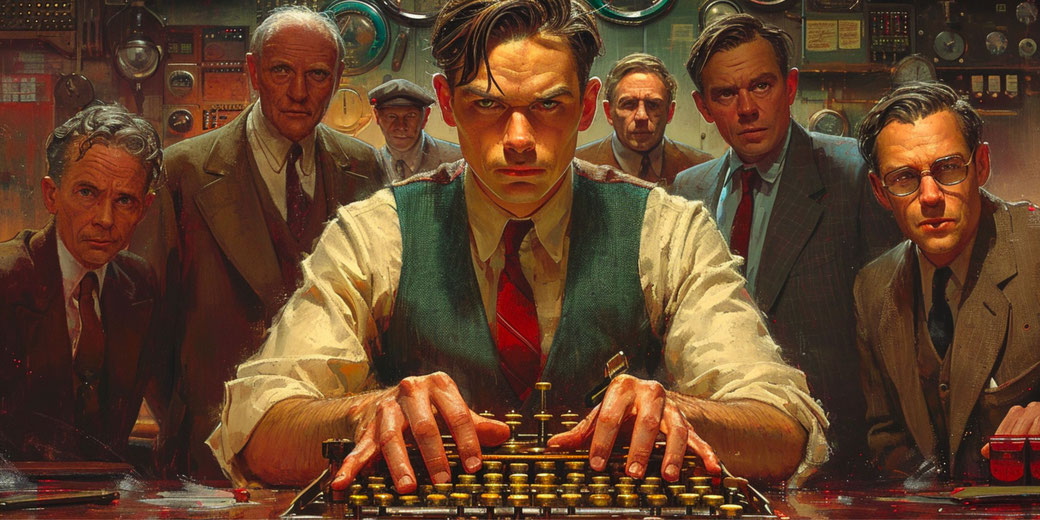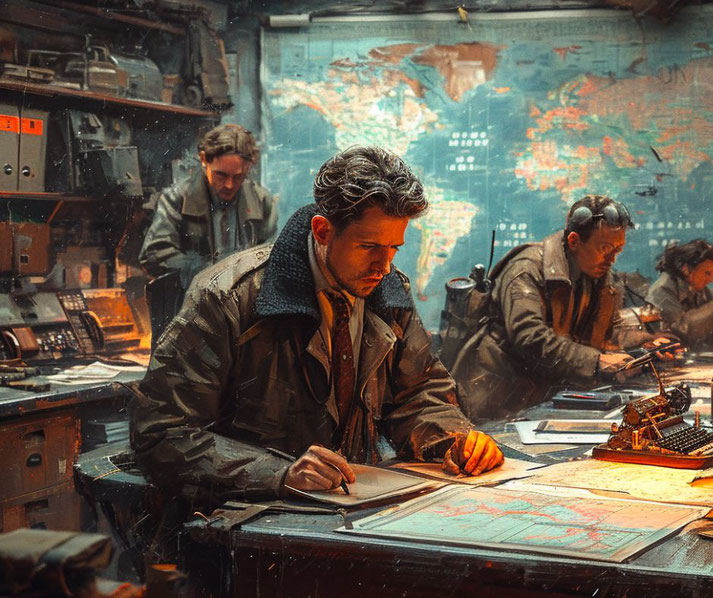How the Allies finally cracked the Enigma machine's mysterious codes to help win WWII

As World War II unfolded, the Enigma machine became a cornerstone in the German military's communication strategy, used extensively across various branches for conveying encrypted orders and intelligence.
The complexity of the Enigma's encryption system was believed to render it virtually impregnable, fostering a sense of confidence in the security of German military communications.
However, this reliance on the machine's perceived invulnerability would eventually become a critical vulnerability.
But, how did its intricate coding mechanism work?
Who were the minds behind its creation?
And more importantly, how was its code eventually broken?
How the Enigma machine was created
Invented by German engineer Arthur Scherbius in 1918, the Enigma machine emerged at a time when the need for secure communication was becoming increasingly apparent due to the advancements in radio technology and intelligence operations.
Scherbius, recognizing the potential of using a machine for encryption, patented his invention in 1919 and subsequently founded the Chiffriermaschinen Aktiengesellschaft company to manufacture and market the device.
The Enigma machine's early models, however, saw limited commercial success initially, mainly used by banks and other businesses for secure communications.
It wasn't until the late 1920s that the German military began to recognize the potential of the Enigma for secure military communications.
By 1926, the German Navy adopted a version of the Enigma, and the Army followed suit in 1928, leading to several enhancements tailored to military requirements.
These military versions of the Enigma machine were more complex than their commercial counterparts.
They included additional rotors (the Army version had three rotors, which increased to five in later models) and a plugboard that added an extra layer of encryption.
The combination of rotor settings and plugboard configurations offered a staggering number of possible settings, making the Enigma's encryption extremely difficult to break.
Each day, the German military would issue new settings, known as the key list, further complicating the task for anyone attempting to intercept and decrypt the messages.
The continual development of the Enigma machine was marked by a series of refinements and modifications.
For instance, in 1930, the Enigma I, commonly referred to as the Wehrmacht or Service Enigma, was introduced and became the standard issue for the German military services.
This model was equipped with a plugboard and used different wiring, which significantly increased the cryptographic strength of the machine.

The central role of the Enigma machine in WWII
With the outbreak of World War II in 1939, the Enigma machine was already well-integrated into the German military's communication infrastructure.
The German forces relied heavily on this encryption device to secure communications across various branches - the Army, Air Force, Navy, and intelligence agencies.
The use of the Enigma was a key strategy in maintaining operational secrecy and coordinating complex military operations across vast distances.
The Enigma's encryption method, which involved changing the cipher system daily, was considered unbreakable at the time.
This confidence in the machine's security had a profound impact on German military strategy, allowing for the transmission of sensitive information with the assumption of complete security.
The effectiveness of the Enigma was evident in major military campaigns.
For instance, during the early years of the war, particularly in the blitzkrieg tactics used in the invasions of Poland in 1939 and France in 1940, the Enigma played a crucial role in facilitating rapid and secure communication.
How the Allies finally cracked the Enigma code
The initial breakthrough in Enigma's cryptanalysis can be traced back to the 1930s, with the work of Polish cryptanalysts Marian Rejewski, Jerzy Różycki, and Henryk Zygalski.
Utilizing mathematical methods, they managed to reconstruct the wiring of the Enigma's rotors, a significant feat considering they had never seen an actual machine.
The Polish Cipher Bureau's achievements laid the groundwork for later efforts by the Allies.
With the imminent threat of German invasion in 1939, the Polish team shared their findings with British and French intelligence.
Building on the Polish foundation, British cryptanalysts at Bletchley Park, led by Alan Turing and Gordon Welchman, further advanced Enigma decryption techniques.
Turing, a pioneering mathematician and logician, developed the Bombe machine in 1940, an electromechanical device that dramatically increased the speed of the code-breaking process.
The Bombe was designed to simulate the Enigma machine and expedite the finding of correct rotor settings.
The codebreakers' task was daunting, given that the Enigma settings were changed daily, resulting in a vast number of potential configurations that needed to be tested each day.
However, the Bombe machines, combined with other techniques like the development of 'cribs' (predicted plaintext segments of encrypted messages), gradually made it possible to intercept and decipher a significant amount of German military traffic.
Another significant contribution came from the capture of key Enigma-related materials.
Notable instances include the capture of the U-boat U-110 in May 1941, which yielded an Enigma machine and a set of codebooks.
Such events provided invaluable insights into the Enigma's operation, aiding the cryptanalysts in their decryption efforts.

How Enigma changed the history of codebreaking
The successful cryptanalysis of the Enigma had profound implications for the outcome of World War II.
It allowed the Allies to intercept and understand German strategic and tactical plans, providing a critical advantage in numerous military engagements.
This intelligence, often referred to as Ultra, contributed significantly to the Allied victories in battles such as the Battle of the Atlantic, the North African campaign, and the D-Day invasion.
The cryptographic work during this period laid the groundwork for several fundamental concepts in computer science and mathematics.
Alan Turing's work, in particular, contributed to the development of theories that would eventually lead to the creation of the modern computer.
His concept of a universal machine, which formed the basis of what we now know as the Turing machine, was a theoretical construct that demonstrated the possibilities of algorithmic computation.
In addition to these theoretical advancements, the practical aspects of codebreaking during the war also led to developments in areas such as programming and software development.
The need to process vast amounts of data efficiently led to innovations in data management and the development of early forms of programming.
These efforts were among the first to use machines for complex, large-scale data processing tasks, setting a precedent for future computing and data processing techniques.
Moreover, the collaboration between mathematicians, engineers, linguists, and intelligence officers at Bletchley Park and other decryption sites fostered a multidisciplinary approach that would become a hallmark of later technological and scientific research.
This collaborative model demonstrated the value of combining diverse fields of expertise, an approach that is now ubiquitous in modern scientific and technological research.
What do you need help with?
Download ready-to-use digital learning resources
Copyright © History Skills 2014-2025.
Contact via email
With the exception of links to external sites, some historical sources and extracts from specific publications, all content on this website is copyrighted by History Skills. This content may not be copied, republished or redistributed without written permission from the website creator. Please use the Contact page to obtain relevant permission.





